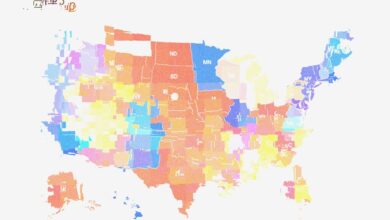

Photo-Illustration: Intelligencer; Photos: Getty Images
If you are one of those registered voters who is inclined to cast a ballot only if it really matters, this is your time. With six-and-a-half weeks left until Election Day and several states about to send out mail ballots, polls are showing a presidential race that appears to be settling into a dead heat both nationally and in the battleground states. The gold-standard national New York Times-Siena survey that dropped on September 19 is illustrative. Among likely voters, Kamala Harris and Donald Trump are tied at 47 percent. If minor-party and independent candidates and independents are identified in the poll, Harris and Trump are tied at 46 percent. Each is given a favorable rating by 48 percent of likely voters.
In the FiveThirtyEight polling averages, with 18 national polls taken after the September 10 Harris-Trump debate now in the vault, Harris leads Trump by 2.8 percent (48.3 to 45.5 percent). Her lead was 2.5 percent the day of the debate. It’s now safe to say she got a small bounce that didn’t last long (her post-debate lead peaked at 3.3. percent). She has, however, led Trump in these averages from the day Joe Biden dropped out of the race and designated her as his preferred successor. There’s no clear evidence that the second attempted assassination of Trump last weekend changed the race either. It’s too early to say the contest has become impervious to any “game-changing” moments, but the polls show two huge and roughly equal voter coalitions with a lot of stability.
If you assume Trump will for the third straight general election benefit from some sort of Electoral College advantage due to “wasted votes” for the Democrat in deep-blue states like California and New York, then Harris’s current national popular vote lead is highly consistent with a dead-even outcome in the only count that actually matters. Nate Silver’s current probabilistic forecast of the actual winner shows Trump with an infinitesimal advantage of 51.0 percent to 48.8 percent.
Polling in the seven battleground states also shows a close, tense competition. Per FiveThirtyEight, Harris leads in the three “Blue Wall” Rust Belt states: in Michigan by 2.3 percent (48.3 to 46.0 percent); in Wisconsin by 1.6 percent (48.3 to 46.8 percent); and in Pennsylvania by 1.4 percent (48.2 to 46.8 percent). She also has a tiny lead of 0.5 percent (47.2 to 46.7 percent) in limited polling from Nevada. Meanwhile, Trump is maintaining small leads in the three other Rust Belt battleground states: 0.6 percent (47.5 to 47.0 percent) in Arizona; 1.0 percent (48.0 to 46.9 percent) in Georgia; and 0.3 percent (47.6 to 47.3 percent) in North Carolina.
The map shows that the two candidates continue to have multiple paths to 270 electoral votes. If the election turns out as current polling indicates, Harris would win 276 electoral votes and Trump would win 262. But losing Nevada (the state where she has the smallest lead) would knock her down to the bare minimum of 270 electoral votes, and with Nebraska’s governor and legislature now threatening to move to a winner-take-all electoral vote system and deny Harris a near-certain electoral vote in the Omaha-based Second Congressional District, a tie in the Electoral College and a presidency determined by the U.S. House is not science fiction. Another source of anxiety for Democrats is the fact two key states where Harris is leading, Pennsylvania and Wisconsin, were ground zero for polling errors underestimating Trump’s vote in 2016 and 2020.
In terms of the key target voting groups, Harris and Trump are continuing to form coalitions similar to those that prevailed in the Biden-Trump contest of 2020. In the new Times-Siena national survey, Harris leads among under-30 voters by 58 to 37 percent; among Black voters by 79 to 15 percent; among Hispanic voters by 51 to 39 percent; and among white voters with a college education by 61 to 36 percent. Trump leads among seniors by 51 to 44 percent; among non-college-educated voters by 56 to 38 percent; and among white non-college-educated voters by 66 to 30 percent. The gender gap in this survey (Harris leading among women 54 to 42 percent, and Trump among men by 54 to 40 percent) is almost identical to the one that appeared among validated voters in the Clinton-Trump contest of 2016 (it was smaller in 2020).
Times-Siena shows 5 percent of the electorate planning to vote for non-major-party candidates (with Libertarian Chase Oliver and Green Jill Stein each holding 2 percent); in 2020 1.9 percent actually voted for non-major-party candidates. The trend lines following Robert F. Kennedy’s withdrawal from the race (and removal from the ballot in some states) indicate the non-major-party vote will be lower than the polls are showing right now. Turnout indexes continue to look positive, as has been the case since Harris replaced Biden.
We don’t know if this is going to rank with the closest presidential elections ever (i.e., the near-ties in the national popular vote in 1960, 1968, and 2000 and the razor-close fights for electoral votes in 2000, 2016, and 2020). But at this point, it is among the most unpredictable, particularly if you consider the high probability that Trump will contest the results if he loses. Hang onto your sensibilities and if you care about the results, don’t relax for a moment.
Source link




